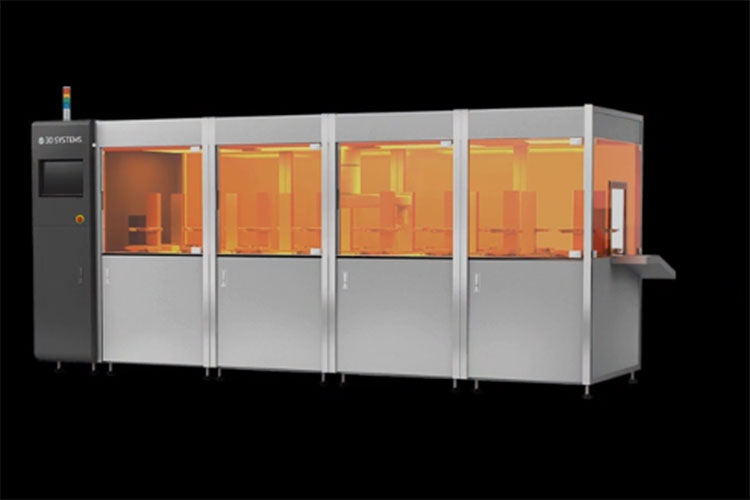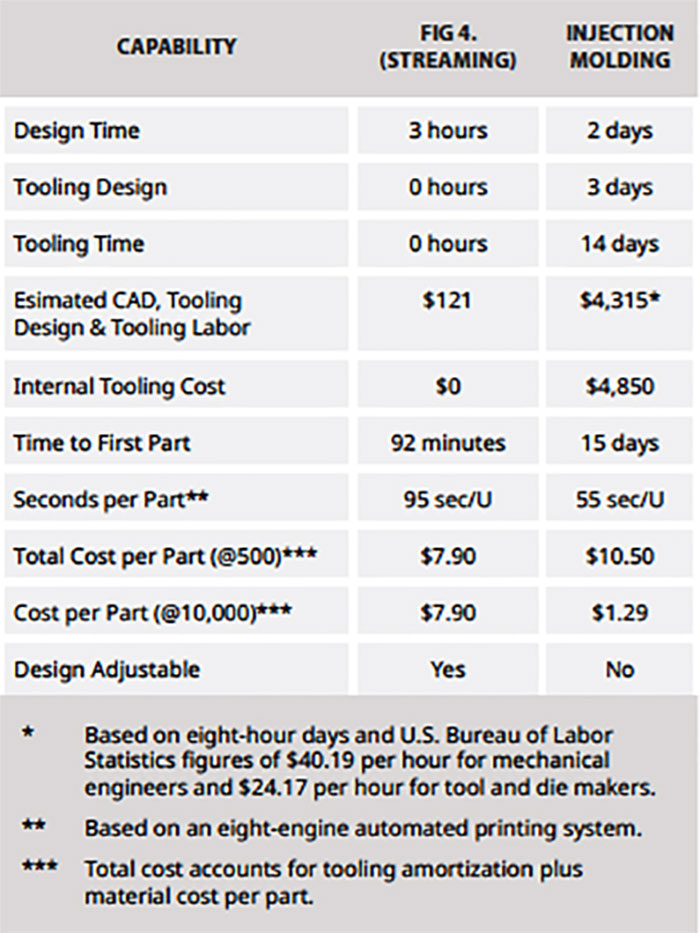The dental industry is increasingly looking to 3D printing as a method for creating implants, guides and tools. The technology allows dental professionals to easily and quickly create implements and implants that are customized to the patient, saving time and money compared to more traditional methods of fabrication. An exciting development in dental 3D printing has come from 3D Systems‘ Figure 4 technology, which promises unparalleled speed and precision in the manufacturing of crowns, aligners and more.
Philip Schultz, Senior Vice President, General Manager, On Demand Manufacturing & Plastics, recently discussed Figure 4 and Digital Molding, which he calls “the next advancement for 3D printing.”
“It provides an immediate solution to tool-based thermoplastic molded production using lab-proven rigorous repeatability,” he says. “New and advanced 3D printers will now behave like other manufacturing equipment, offering longer production runs and comparable repeatability. The tedious process of mold development and tooling is substituted by digital design that can be finished in a matter of hours instead of days or weeks. Although this methodology will not replace injection molding-based mass production, it offers an immediacy of production and a very rapid change of parts being produced. This occurs while tooling is still being designed and machined.”
He explains that recent testing showed that Digital Molding based on Figure 4 technology offers print speeds of up to 100 mm per hour, at six sigma repeatability. Digital Molding can compete with injection molding in aesthetics, function, cost and durability – the key is knowing when to use which technology.
“Digital Molding is a toolless, volume production method for plastic parts,” he says. “To work at volume, the technology must scale to meet a variety of factory situations. To be viable it must equal or exceed traditional injection molding in quality as well have acceptable speed. Benchmark testing found a Figure 4 Digital Molding system of eight modules can turn out 10,000 units of a textured automotive vent in 11 days; traditional injection molding tooling would be produced during those 11 days. Assuming injection molding starts after 11 days, Digital Molding could produce an additional 4,000 units of the vent in the same time that injection molding could produce 10,000.”
Digital Molding’s CAD-to-production speed makes it ideal for Low Rate Initial Production, Schultz continues, or bridge manufacturing. Companies can get to market more quickly by starting with Digital Molding and then switching to or adding injection molding to ramp up production as demand increases.
For the dental industry, Figure 4-based Digital Molding is particularly ideal, as the industry often requires small batches of individually customized pieces. This summer, 3D Systems is introducing NextDent 5100, a new 3D printer that combines Figure 4 technology with the company’s broad portfolio of dental materials. The high-speed system is designed for the production of dental appliances and sacrificial castings, and is compatible with 30 different dental materials offered in a variety of colors to match patients’ teeth and gums.
 The dental industry may be the one that most reveals how 3D printing has come to compete with injection molding – though “compete” may not be the best term. “Complement” may be more accurate. As Schultz says, 3D printing is not going to replace injection molding completely, nor does it need to. In the dental industry, however, it may replace injection molding for certain applications. The manufacturing of dental appliances requires high levels of customization, for which injection molding has never been the most efficient. One of the greatest appeals of 3D printing is its ability to customize and to create multiple unique pieces in a single build.
The dental industry may be the one that most reveals how 3D printing has come to compete with injection molding – though “compete” may not be the best term. “Complement” may be more accurate. As Schultz says, 3D printing is not going to replace injection molding completely, nor does it need to. In the dental industry, however, it may replace injection molding for certain applications. The manufacturing of dental appliances requires high levels of customization, for which injection molding has never been the most efficient. One of the greatest appeals of 3D printing is its ability to customize and to create multiple unique pieces in a single build.
Certain industries benefit more from 3D printing than others, and the dental industry is one of them. It won’t be surprising to see 3D printing continue to infiltrate the dental market, especially as technology like Figure 4 advances and becomes more available.
Discuss this and other 3D printing topics at 3DPrintBoard.com or share your thoughts below.



144 Replies to “Figure 4 Technology and Dental 3D Printing”
Comments are closed.